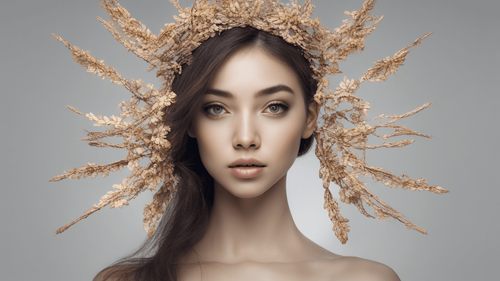
Introduction
Imagine a world where machines can conjure up stunning works of art, imitating the human creative process with astonishing accuracy. Welcome to the realm of deep learning image generators. In this article, we'll dive deep into the captivating world of these AI-driven marvels, exploring their inner workings, applications, and the revolutionary impact they've had on the creative landscape. From generating lifelike paintings to crafting awe-inspiring designs, the deep learning image generator has truly redefined the boundaries of human imagination.
Deep Learning Image Generator: Unveiling the Magic
A Glimpse into the Underlying Technology
At its core, a deep learning image generator employs advanced neural networks, particularly Generative Adversarial Networks (GANs), to create images that are virtually indistinguishable from those produced by human artists. GANs consist of two components – a generator that produces images and a discriminator that evaluates their authenticity. Through a continuous cycle of creation and evaluation, GANs refine their output, resulting in stunningly realistic visuals.
Training the Machine Mind
Training a deep learning image generator is a feat of technological brilliance. Vast datasets of existing artwork and images become the foundation for the machine's creative education. As the generator interacts with these data troves, it learns to mimic various artistic styles, brushstrokes, and techniques. This iterative learning process, akin to an artist honing their craft, empowers the machine to produce art that resonates deeply with human emotions.
Applications That Transcend Imagination
The applications of deep learning image generators span numerous domains, each more mesmerizing than the last. From architectural visualization that envisions futuristic structures to fashion design that pushes the boundaries of style, these AI-powered generators have expanded the horizons of creativity. Notably, the entertainment industry has also embraced this technology, using it to create lifelike CGI for movies and video games that blur the line between fiction and reality.
The Inner Workings of a Deep Learning Image Generator
Layers of Innovation: How It All Comes Together
A deep learning image generator consists of multiple layers, each contributing to the final masterpiece. The initial layers extract basic features, such as edges and textures, from the input data. Subsequent layers progressively refine these features, adding complexity and depth to the image. As the neural network evolves through training, it gains a nuanced understanding of artistic elements, culminating in the production of striking visuals.
Balancing Act: The Role of Loss Functions
The training process hinges on the use of loss functions, mathematical constructs that quantify the difference between generated images and actual artwork. These functions guide the generator towards producing images that align with human aesthetics. As the generator and discriminator engage in their dance of creation and evaluation, the loss functions serve as the choreographer, orchestrating a symphony of creativity.
Overcoming Challenges: From Uncanny Valley to Artistic Heights
Early iterations of deep learning image generators faced the uncanny valley phenomenon, where generated images exhibited subtle, unsettling deviations from reality. However, persistent research and advancements in the field have propelled these generators across the valley, producing images that evoke awe and admiration. The interplay between technical refinement and artistic intuition has been the driving force behind this remarkable transformation.
Transforming the Creative Landscape
Democratizing Artistry: A Canvas for All
One of the most remarkable aspects of deep learning image generators is their democratizing effect on artistry. These tools empower individuals, regardless of their artistic background, to engage in the creative process and produce captivating visuals. Whether you're an aspiring painter, a graphic designer, or simply an enthusiast with a passion for aesthetics, these generators offer a canvas for your imagination to run wild.
Fostering Collaborations: Human-AI Symbiosis
The relationship between human creators and AI-generated art is evolving into a harmonious symbiosis. Artists now harness the power of deep learning image generators as collaborators, infusing their unique vision and emotions into the machine-generated canvas. This convergence of human ingenuity and artificial intelligence has led to a new era of artistic expression, where creativity knows no bounds.
FAQs About Deep Learning Image Generators
What Makes Deep Learning Image Generators Unique?
Unlike traditional algorithms, deep learning image generators possess the ability to create art that captures the essence of human creativity. They learn and adapt, producing visuals that resonate with emotions and artistic styles.
Are Deep Learning Image Generators Limited to Visual Art?
No, these generators extend their prowess beyond visual art. They have found applications in music composition, writing, and even culinary arts, showcasing their versatility and potential.
Do Artists Consider AI-Generated Art Legitimate?
The acceptance of AI-generated art within the artistic community is a topic of ongoing debate. While some embrace it as a new form of expression, others raise questions about the essence of creativity and human involvement.
Can Deep Learning Image Generators Replicate Famous Art Styles?
Absolutely. By training on extensive datasets of renowned artworks, these generators can replicate and fuse various artistic styles, producing pieces that pay homage to the masters of the past.
What's the Role of Ethics in AI-Generated Art?
Ethical considerations surrounding AI-generated art revolve around issues of authorship, attribution, and the potential for copyright disputes. Addressing these concerns is crucial as AI-generated art gains prominence.
How Will Deep Learning Image Generators Shape the Future?
The future of deep learning image generators holds exciting possibilities. They could inspire new forms of art, lead to innovative interdisciplinary collaborations, and redefine the very concept of human creativity.
Conclusion
In the ever-evolving landscape of technological innovation, deep learning image generators stand as a testament to humanity's boundless creativity. These AI-powered marvels have shattered barriers, blurred distinctions, and opened avenues of expression that were once thought to be exclusively human. As we continue to explore the depths of AI's potential, one thing remains clear – the deep learning image generator has ignited a new era of artistic exploration, where the canvas of imagination knows no boundaries.